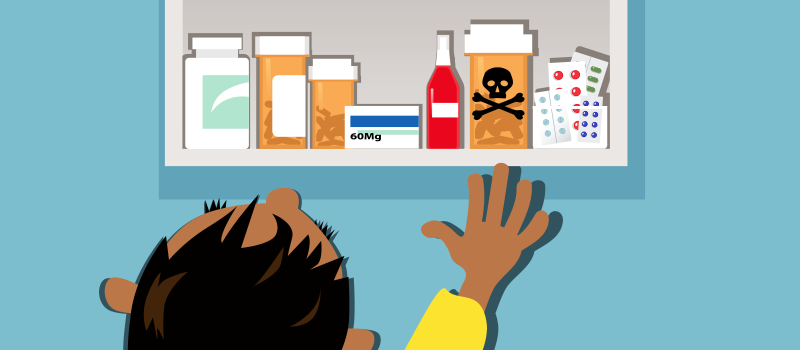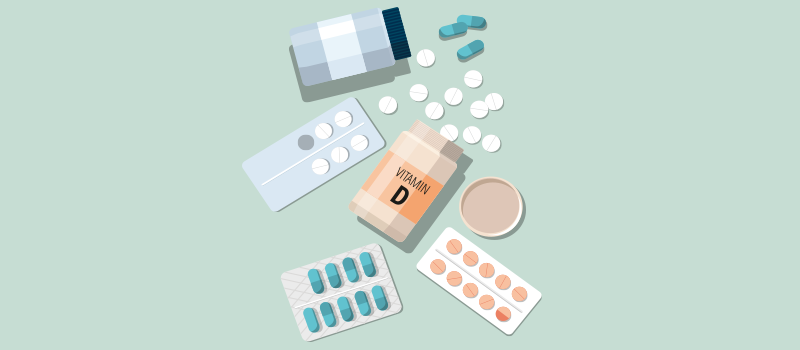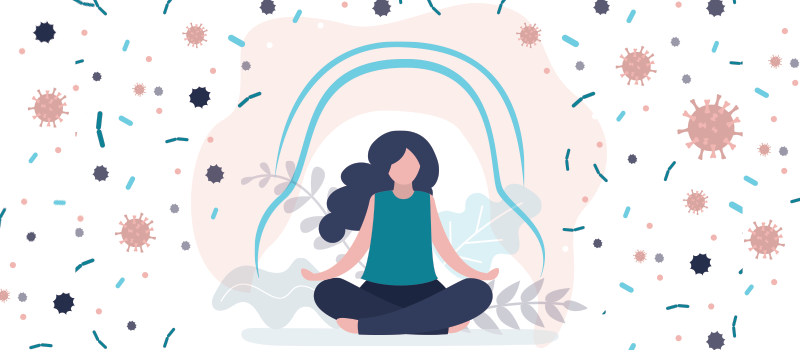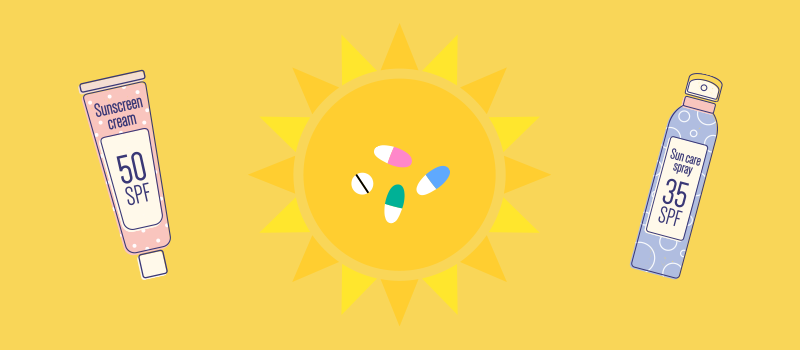What’s the Buzz
The Bee Healthy Blog
Cevimeline for Dry Mouth: Side Effects & Benefits

If you have dry mouth due to Sjogren’s syndrome, your healthcare professional may prescribe a medication called cevimeline (common brand Evoxac) to provide relief from this symptom. Please continue reading to find out the benefits of cevimeline as well as potential side effects.
What is cevimeline? How does it work?
Cevimeline HCl is a cholinergic agonist. It works by binding to muscarinic receptors and increasing secretions from the salivary glands.
What is cevimeline used to treat?
Cevimeline is used to treat symptoms of dry mouth in patients with Sjogren’s syndrome. Sjogren’s is a chronic autoimmune disorder in which the immune system mistakenly attacks moisture-producing glands in the mouth, eyes, and other parts of the body. While dry mouth and dry eyes are the two most common symptoms, Sjögren's syndrome can also cause dry skin, vaginal dryness, salivary gland enlargement, fatigue, persistent dry cough, rashes (especially after sun exposure), muscle pain, and joint pain and stiffness.
What are the benefits of cevimeline?
Cevimeline provides relief from dry mouth by helping the salivary glands in the mouth make more saliva.
Does cevimeline help with dry eyes?
Cevimeline is approved to treat dry mouth. It is not approved for other symptoms, such as dry eyes. A randomized, double-blinded clinical trial with 60 participants has shown that cevimeline at the dosage of 20 mg three times daily is safe and effective at treating dry eyes caused by Sjögren's syndrome. Even though the result of this study is very promising, further studies with a larger patient population are necessary to solidify the role of cevimeline in treating Sjogren’s syndrome-associated dry eyes.
You should discuss different treatment options with your doctor if you need to be treated for dry eyes caused by Sjögren's syndrome.
How do you take cevimeline?
Cevimeline comes in the form of a capsule to be taken by mouth with water. The usual dose is 30 mg three times a day. You should try to take the medicine at around the same time every day. This will help you remember to take your medicine.
Read the prescription label carefully and follow your doctor’s dosing instructions. Do not increase or decrease the dose or dosage frequency without talking to your healthcare professional.
What are the side effects of cevimeline?
Common side effects of cevimeline include sweating, nausea, diarrhea, excessive salivation, frequent urge to urinate, flushing, headache, and common cold symptoms such as runny nose and stuffy nose. Call your doctor for medical advice about side effects if they are severe or do not go away in a few days once your body has had a chance to get used to the medicine.
More serious adverse effects of cevimeline are described below. You should seek immediate medical help if you develop these signs and symptoms:
- Vision changes and eye pain;
- Dehydration symptoms caused by increased sweating: confusion, dizziness, dark/concentrated urine, headache, feeling like you may faint, hot and dry skin, problem urinating, and fatigue;
- Trouble breathing, chest pain, shortness of breath;
- Urinary tract infection (UTI): pain with urination, frequent urination, fever, stomach pain or flank pain;
- Irregular heartbeat.
What are the precautions when taking cevimeline?
Unusual or allergic reaction
Tell your doctor if you have had allergic reactions in the past to cevimeline or any other medication.
Drug interactions
Taking cevimeline with certain other medications can increase the risk of serious adverse reactions. Give your doctor a complete list of all your current medications, including prescription drugs, over-the-counter medications, dietary supplements, and herbal products. Be sure to mention if you take the following medications:
- Medicine used to treat heart rhythm abnormalities
- Certain medications for high blood pressure (beta blockers, calcium channel blockers)
- Antibiotics, antifungal agents
- Antidepressants
- Antiviral therapy to treat HIV or hepatitis C.
Missed dose
If you miss a dose of cevimeline, take it as soon as you remember. However, if it is almost time for the next dose, skip the missed dose and go back to your regular dosing schedule. Do not take an extra dose to make up for a missed dose.
Storage
Store at room temperature and keep out of reach of children and pets.
Overdose
In case of an overdose, call your doctor immediately and seek emergency medical attention. You can also call the national poison control center at 1-800-222-1222. Signs and symptoms of a cevimeline overdose may include headache, visual disturbances, watery eyes, excessive sweating, trouble breathing, stomach cramps, nausea, vomiting, diarrhea, slow heartbeat, confusion, and muscle weakness.
Driving and hazardous activities
Taking cevimeline can cause blurred vision and other visual disturbances, especially at night. These side effects can impair your ability to drive safely. Exercise caution while driving and performing hazardous activities, especially in reduced lighting conditions, until you know how this medicine affects you.
Dehydration
Cevimeline increases the risk of excessive sweating, which can lead to dehydration. Drink plenty of water to prevent dehydration. Avoid strenuous exercise in hot weather. Call your doctor if you sweat excessively while on cevimeline.
Pregnancy and breastfeeding
It is not clear if cevimeline can harm an unborn baby or if the drug passes into breast milk and could harm a nursing baby. Check with your healthcare professional before taking this medicine if you are pregnant or breast feeding.
Who should not take cevimeline?
People with certain health conditions should not take cevimeline or should take it with caution. Talk to your doctor for medical advice if you have:
- Uncontrolled asthma
- Chronic bronchitis
- Chronic obstructive pulmonary disease (COPD)
- Narrow-angle glaucoma, acute iritis
- Kidney disease, kidney stones, gallstones
- Liver disease
- Heart rhythm disorder
- High blood pressure
- heart disease, chest pain, or a history of heart attack.
Which is better: pilocarpine or cevimeline?
Both pilocarpine and cevimeline are muscarinic agonists that can increase saliva production and decrease dry mouth in patients with Sjogren’s syndrome.
While studies have shown that both medications are effective at increasing salivary flow in participants, different studies may have yielded different conclusions, indicating one agent is more effective than the other.
Common side effects of both pilocarpine and cevimeline include sweating, flushing, urinary frequency and urgency, and gastrointestinal discomfort.
While both of these medications are approved to treat dry mouth caused by Sjogren’s syndrome, your doctor may choose to prescribe one over the other based on their professional experience, your medical history, in addition to your response to therapy and tolerability of side effects.
References:
- https://medlineplus.gov/druginfo/meds/a608025.html#
- https://dailymed.nlm.nih.gov/dailymed/drugInfo.cfm?setid=0679dd4c-fece-4c6d-b273-2c62237e8973#:
- https://pubmed.ncbi.nlm.nih.gov/15234277/#
- https://onlinelibrary.wiley.com/doi/10.1111/scd.12010#:
- https://www.sciencedirect.com/topics/neuroscience/cevimeline#:
- https://sjogrens.org/blog/2020/the-sun-sjogrens-how-to-protect-yourself#:~:text=In%20response%20to%20the%20sun,%2C%20pain%2C%20and%20disease%20flares.
- https://www.nhs.uk/conditions/sjogrens-syndrome/
- https://www.ncbi.nlm.nih.gov/books/NBK539783/#:~:text=Acetylcholine%20accumulation%20at%20muscarinic%20receptors,tightness%2C%20diarrhea%2C%20and%20cramps.
- https://pubmed.ncbi.nlm.nih.gov/19416095/#:~:text=Conclusion%3A%20Both%20drugs%20showed%20efficacy,was%20more%20effective%20than%20pilocarpine.












SOCIAL